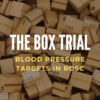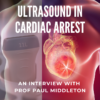“More is missed by not looking than by not knowing” William Osler
One of the biggest challenges I find, is being presented with the crying infant. The challenge is there because they are too young to tell us what is wrong. It is up to us to use all the tools in our possession to discover the underlying problem.
Over the years and after listening to how others approach these situations, I have developed an approach when I don’t have any clue as to what’s going on. Here is my approach.
Firstly, spend time with the child and the family.
The emergency department is a busy place, but this you need to put time aside to sort this problem. Get the full history as you always do.
Give the child the opportunity to accept you.
I find that even with the older children, who still can’t talk, that once I have spent time talking with mum and/or dad, they relax more. You don’t need to do ‘Goofy’ impersonations or become a trapeze artist (in fact, these sometimes scare the child). All you need to do is sincerely care and not rush. It may be that the child needs to be examined in mum’s lap, or some of the examination will use mum to assist. That’s fine.
Look at all the vitals.
There may be fever etc and then you need to go down a different path, but if all is NORMAL…
Totally undress the child PLUS take off the nappy.
With the child undressed, do a full examination, leaving ears and mouth until last as they tend to cause more distress.
Why is it important to take off the nappy? Because you need to look for:
- herniae
- bruising
- blood in the nappy
- rashes
- hair tourniquet in males
All normal?
I then will be sure to put the child on a monitor.
Is there some kind of arrhythmia? Normally SVT makes children subdued, but there can be another effect.
All normal?
I then consider putting local anaesthetic in the eyes.
This is in case there is an abrasion. See what happens.
No difference?
I then have the parent feed the child and see what happens.
No difference?
At this point I consider a workup + admission.
There are many important diagnoses to not miss, one is set out in the video ‘KAWASAKI DISEASE’. This is this week’s feature video on www.resustv.com.










